1. Emperor Penguins: Feet-Warming Dads

Out in Antarctica, when the female heads off to hunt, the male remains behind, carefully balancing a single egg on his feet wrapped in a warm skin fold. For about 65–75 days, he huddles through brutal winds (up to 200 km/h!) and temperatures below –50 °C, all without eating, relying on stored fat to survive. By the time the chick hatches, dad has fasted for nearly four months and lost half his weight, but he’s kept the egg safe and warm at around 31 °C. His endurance gives mom time to return and share feeding duties once food is available.
2. Seahorses: Daddy Gets Pregnant
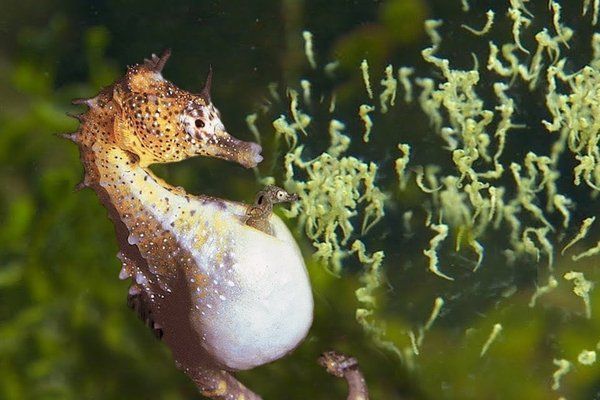
When you think of pregnancy, it’s usually mothers, but seahorses flip the script. After a charming courtship dance, the female gently deposits her eggs into the male’s brood pouch. He then fertilizes them, and for 9 to 45 days, he provides oxygen, nutrients, waste removal, and even a placenta‑like function to support the growing embryos. He’s a true partner, regulating salinity and delivering what baby seahorses need before birth. When birthing time arrives, he “labor”‑constricts and releases anywhere from a few hundred to over a thousand tiny fry into the ocean’s currents. This male pregnancy is rare, only seen in seahorses and their relatives like pipefish, and it highlights a remarkable reversal of traditional parental roles.
3. Poison Dart Frogs: Tadpole Taxi
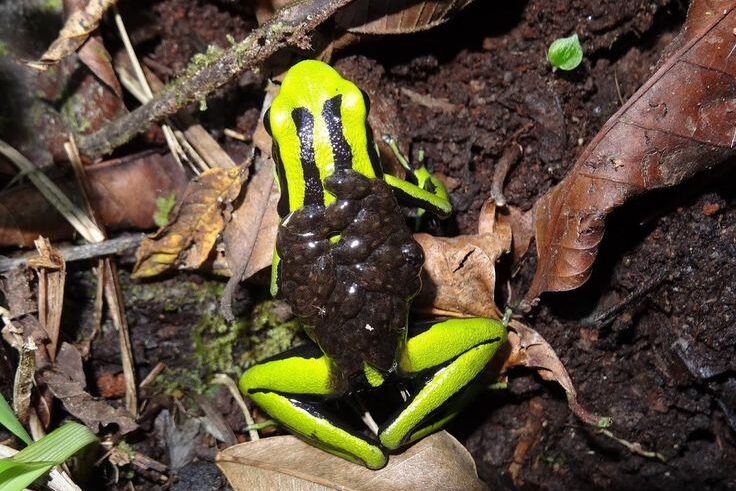
Male poison dart frogs take on a vigilant babysitter role in the rainforests of Central and South America. Once the eggs hatch, the father gently carries each tadpole, one by one, on his back to small pools of water, often in bromeliad plants or leaf axils, where they can continue their growth. He remembers each tadpole’s location and returns frequently to check on them. If a pool dries up, he relocates his tadpole to a safer spot, ensuring it has enough water and food. This care can last several weeks until the tadpole metamorphoses, and sometimes the mother contributes by supplying unfertilized eggs as a food source.
4. Rheas: Solo Bird Fatherhood
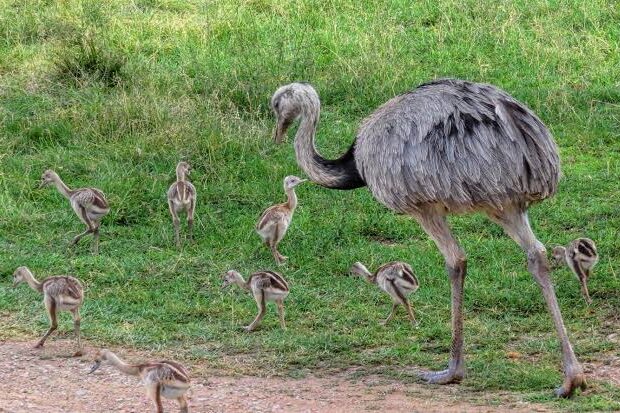
In the grasslands of South America, the large, flightless rhea takes on all fathering responsibilities. After multiple females each lay eggs in his nest, he becomes the sole incubator and protector of up to 50 eggs. He diligently turns and shields the nest and, once the chicks hatch, he leads them and defends them fiercely, all alone. His nest turns into a bustling nursery with dozens of chicks following him, learning to forage and stay safe. In this system, the female plays no part after laying eggs, even leaving the same nest to mate again.
5. Darwin’s Frogs: Vocal-Sac Foster Dad

In the forests of Chile and Argentina lives a frog like no other: Darwin’s frog. The female lays eggs and the male guards them until embryo development, then swallows them whole into his vocal sac. Inside, the tadpoles continue to grow for about six weeks, protected, nourished by egg yolk and sac secretions, until they metamorphose into froglets. When they’re ready, they hop out of his mouth into the forest floor. Virtually all of the early development happens in dad’s throat, making this one of the most unique care strategies in amphibians.
6. Jacanas: Men Doing It All
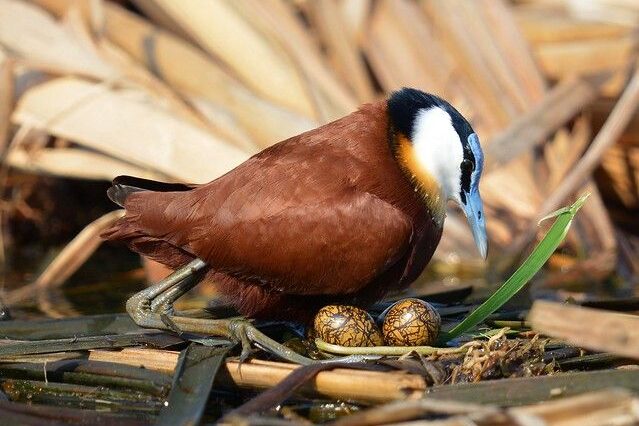
Jacanas are tropical “lily‑trotter” birds known for their flamboyant toes and unusual family setup. After laying and mating, the female leaves, and the male takes sole responsibility for incubating and caring for all the eggs, even from other females. He builds and defends a nest, keeps the eggs warm, then upon hatching, he cuddles chicks under each wing, carrying them when they’re tiny. The female may then mate again with other males, while he remains devoted to his brood.
7. Marmosets: Piggyback Primate Providers
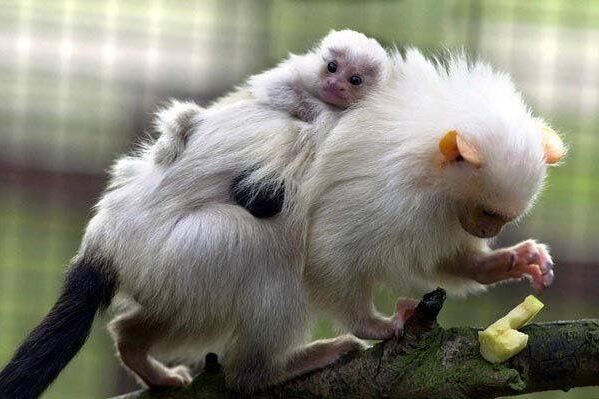
Tiny marmoset monkeys, weighing just half a pound, show big-hearted fatherhood. After twin births, the father actively carries, grooms, and feeds the infants nearly full-time, even taking on cleaning duties after birth. He becomes a midwife of sorts, licking the newborn clean, biting the umbilical cord, and gaining “sympathy weight” during his mate’s pregnancy to prepare for the demands of parenthood. Marmoset fathers also help wean the young by encouraging them to begin eating solid food, babies whose dads were responsive to distress calls gained weight faster and had higher survival rates (87% vs. 45%). Carried on his back nearly full-time, they learn to explore and build secure attachments through close, responsive care.
8. Giant Water Bugs: Backpack Egg Protectors
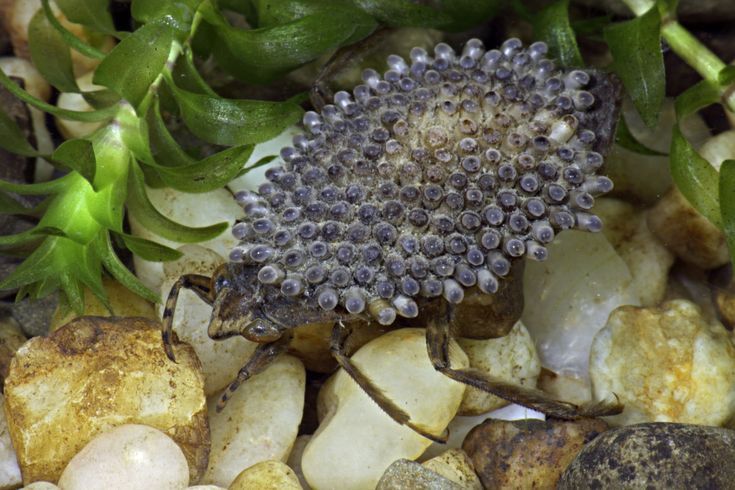
In freshwater ponds across North and Central America, the giant water bug father becomes a mobile nursery. The female glues dozens of eggs onto his back, and he dutifully carries them until they hatch. While on his back, he ensures the eggs don’t dry out by periodically bringing his body to the water’s surface to moisten them. During that time, he’s ever watchful, warding off predators and fanning the eggs to keep them well-oxygenated. When the eggs hatch, the tiny nymphs slip safely into the water, ready to begin their independent lives.
9. Ostriches: Multiple-Mama Male Birders
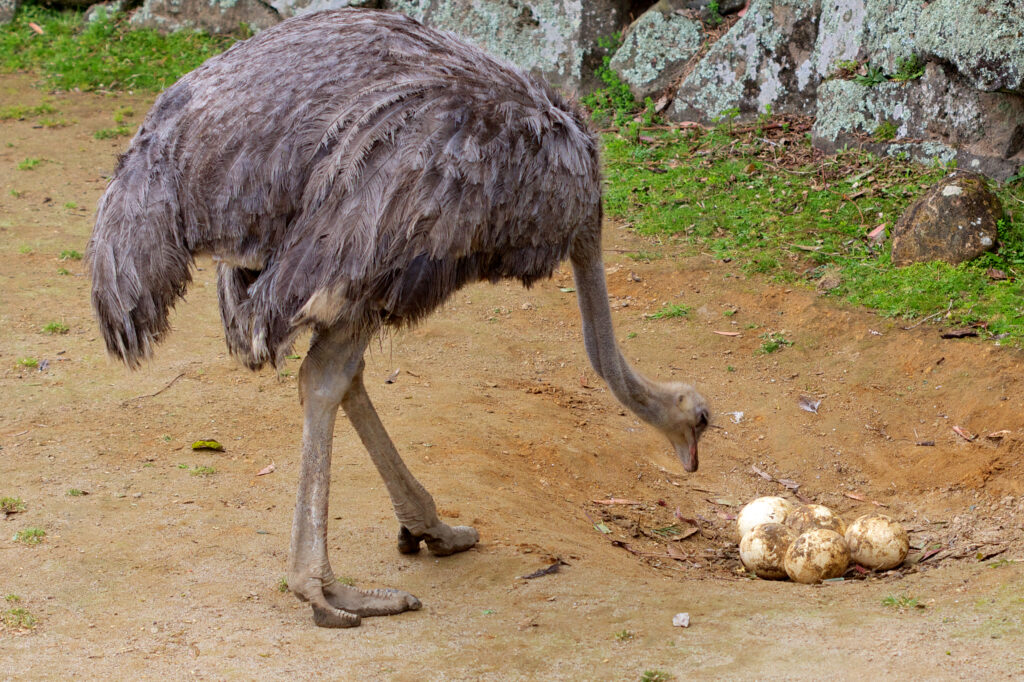
On the African savannah, male ostriches often incubate eggs laid by several females in a communal nest. Becoming the primary guardian, he sits on the nest during chilly nights and cooling hot days, regulating temperature. Once the chicks hatch, he continues leading them to food and water, fiercely defending them against predators. With multiple females’ offspring to care for, one can see how he weaves the conclusion: the male’s role is pivotal in providing protection, warmth, and guidance, from egg to offspring independence.
This story 9 Fathers in Nature Who Do All the Parenting was first published on Daily FETCH


